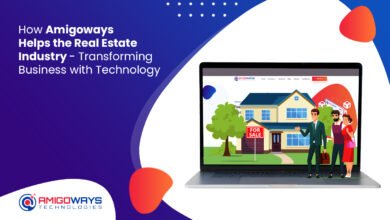
In the fast-paced world of Software as a Service (SaaS), the concept of a Minimum Viable Product (MVP) has emerged as a cornerstone strategy for startups and established companies alike. This approach, focusing on developing a product with enough features to attract early adopters and validate a product idea early in the product development cycle, is particularly crucial in the SaaS sector. Here, rapid innovation and scalability are not just advantages but necessities for survival and growth. This article delves into the unique challenges and strategies for developing minimum viable products in the SaaS industry, emphasizing continuous iteration and scalability to ensure long-term success.
The Unique Landscape of SaaS Minimum Viable Products
The SaaS model presents a unique set of challenges and opportunities for minimum viable product development. Unlike traditional software products, SaaS offerings need to be highly adaptable, scalable, and continuously updated to meet changing customer needs and competitive dynamics. The cloud-based nature of SaaS products means that updates and iterations can be rolled out more swiftly than with traditional software, allowing for a more agile MVP development process. However, this agility comes with its own set of challenges, such as ensuring data security, maintaining service availability, and managing multi-tenant architectures.
The MVP Advantage: Learning and Iterating
The primary goal of an MVP in the SaaS world is to learn about customer preferences and market viability without overcommitting resources. This lean approach allows SaaS companies to test hypotheses, gather user feedback, and validate the core functionalities of their product before scaling. The key is to strike a balance between minimalism and functionality, providing just enough value to engage early adopters while laying a solid foundation for future enhancements.
Continuous Improvement: The Heartbeat of SaaS Minimum Viable Products
In the SaaS sector, the minimum viable product is not a one-time milestone but a starting point for an ongoing process of iteration and improvement. Continuous delivery and integration practices are vital, enabling SaaS companies to roll out incremental updates and enhancements based on real user feedback and usage data. This iterative process helps in fine-tuning the product, fixing bugs, and introducing new features that align with user needs and market trends.
Scaling Strategically: From MVP to Market Leader
Scalability is a critical consideration from the earliest stages of minimum viable product development in SaaS. As user bases grow and workloads increase, the underlying architecture of the SaaS product must be able to handle this growth without compromising performance or user experience. This means designing for scalability from the ground up, using cloud-native services, microservices architectures, and automated scalability solutions.
Leveraging Data and Analytics
Data is the lifeblood of continuous improvement in SaaS MVPs. Analytics tools can provide invaluable insights into how users interact with the product, which features are most popular, where users encounter problems, and what additional functionalities they desire. This data-driven approach allows SaaS companies to make informed decisions about product development and prioritization, ensuring that resources are invested in areas that deliver the most significant impact.
Customer Feedback: The Guiding Light
In the development of SaaS minimum viable products, customer feedback is paramount. Engaging with early adopters, soliciting their opinions, and observing their usage patterns can provide direct insights into the product’s strengths and areas for improvement. This feedback loop, facilitated by surveys, interviews, and usage analytics, helps SaaS companies to iterate their MVPs in alignment with actual customer needs and preferences.
Embracing a Culture of Experimentation
For SaaS businesses, fostering a culture that encourages experimentation and accepts failure as a stepping stone to success is crucial. This mindset allows teams to take calculated risks, test innovative ideas, and learn from outcomes to refine their minimum viable products continuously. Experimentation should be embedded in the company’s DNA, from the C-suite to the development teams, ensuring that innovative ideas are welcomed and explored.
The Role of Cross-Functional Teams
Developing a successful SaaS MVP requires the collaboration of cross-functional teams that bring together diverse perspectives and expertise. Product managers, developers, designers, and marketers need to work in tandem to ensure that the minimum viable product not only meets technical requirements but also addresses real customer needs and market demands. This collaborative approach enhances creativity, accelerates problem-solving, and ensures that the MVP resonates with target users.
Strategic Product Roadmapping
A well-defined product roadmap is essential for guiding the evolution of a SaaS MVP. This roadmap should outline key milestones, feature releases, and iteration cycles, all aligned with the company’s strategic goals and market opportunities. It acts as a blueprint for scaling the minimum viable product, helping teams prioritize efforts and allocate resources efficiently while remaining adaptable to feedback and changing market conditions.
Leveraging Agile and DevOps Practices
Agile methodologies and DevOps practices play a pivotal role in the iterative development and continuous delivery of SaaS MVPs. These approaches enable rapid prototyping, frequent releases, and efficient collaboration between development and operations teams. By integrating development, testing, and deployment processes, SaaS companies can ensure that their MVPs evolve quickly and reliably in response to user feedback and market dynamics.
Understanding Market Fit and Positioning
For a SaaS MVP to succeed, it must not only address specific user needs but also fit within the broader market landscape. This requires a deep understanding of market trends, competitor offerings, and potential niches that the minimum viable product can fill. Effective market positioning involves highlighting the unique value proposition of the MVP and communicating this effectively to target audiences, ensuring that the product stands out in a crowded SaaS marketplace.
Financial Planning and Resource Allocation
Building and scaling a SaaS MVP requires careful financial planning and resource allocation. Startups and established companies alike must balance the need to invest in product development with the reality of budget constraints. This involves making strategic decisions about where to allocate resources for maximum impact, such as investing in key features that will drive user adoption and retention, while also planning for the infrastructure costs associated with scaling the MVP.
Building Partnerships and Ecosystems
In many cases, the success of a SaaS MVP can be accelerated through strategic partnerships and integration into broader ecosystems. Collaborating with other companies, platforms, and service providers can extend the MVP’s reach, enhance its functionality, and provide additional value to users. These partnerships can also open up new channels for feedback and market validation, further informing the iteration and scaling of the MVP.
Conclusion: Navigating the Future of SaaS Minimum Viable Products
As the SaaS industry continues to evolve, so too will the strategies for developing, iterating, and scaling MVPs. The companies that succeed will be those that can not only navigate the complexities of the SaaS model but also embrace a philosophy of continuous improvement, customer-centricity, and agile innovation. By staying attuned to market needs, leveraging data and feedback, and fostering a culture of collaboration and experimentation, SaaS companies can turn their minimum viable products into powerful engines of growth and transformation.
In the journey from minimum viable product to full-scale product, the path is rarely linear, but with the right strategies and mindset, SaaS companies can navigate this terrain and achieve lasting success in the competitive digital landscape.


